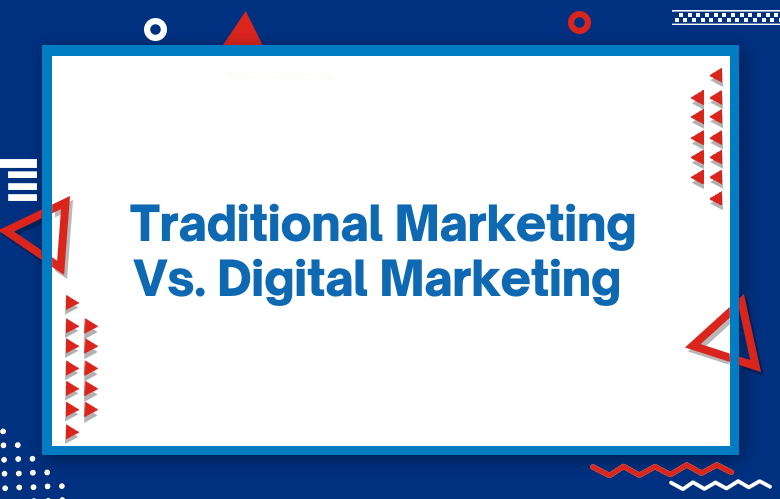Adversarial Attacks for Digital Marketing: Strategies & Defense

Adversarial attacks in digital marketing refer to the deliberate manipulation of AI and machine learning models by feeding them deceptive inputs designed to confuse or mislead, leading to incorrect outputs or decisions. These attacks can significantly undermine the effectiveness of AI-driven digital marketing strategies, from personalized content delivery and recommendation systems to customer segmentation and ad targeting.
Adversarial Attacks for Digital Marketing: Strategies & Defense
The threat of adversarial attacks highlights the vulnerabilities inherent in AI models used in digital marketing and underscores the importance of implementing robust defense mechanisms. As digital marketers increasingly rely on AI to drive campaigns and analyze consumer behavior, safeguarding these systems against such attacks becomes crucial to maintaining integrity, reliability, and effectiveness of marketing efforts.
Defensive strategies against adversarial attacks in digital marketing include
Model Hardening
They are enhancing the robustness of AI models through techniques like adversarial training, where models are exposed to malicious inputs during the training phase to improve their resilience.
Input Validation
They are implementing stringent checks and validations for data inputs to detect and filter out potential adversarial examples before they can impact the model.
Continuous Monitoring
Monitor model performance and outputs regularly for anomalies that may indicate the presence of adversarial attacks, enabling timely detection and response.
Collaborative Security
Engaging in industry-wide collaborations and sharing knowledge about emerging threats and defense mechanisms can help organizations stay ahead of attackers.
By proactively addressing the threat of adversarial attacks, digital marketers can protect their AI-driven strategies, ensuring that they deliver accurate, personalized, and engaging customer experiences while maintaining consumer trust and competitive advantage.
- Key Takeaways
- Understanding Adversarial Tactics
- Threats to Digital Marketing
- Impact on Marketing Strategies
- Examples of Targeted Attacks
- Detecting Suspicious Activities
- Defending Marketing Campaigns
- Best Practices for Prevention
- Enhancing Digital Security
- Staying Ahead of Emerging Threats
- Summary
- Frequently Asked Questions
-
- What are adversarial tactics in digital marketing?
- How can businesses detect suspicious activities related to adversarial attacks?
- What are the best practices for preventing adversarial attacks in digital marketing?
- Why is enhancing digital security crucial for protecting marketing campaigns?
- How can businesses stay ahead of emerging threats in digital marketing?
In the ever-evolving digital marketing landscape, the rise of adversarial attacks has become a pressing concern for businesses worldwide. These sophisticated cyber threats aim to manipulate algorithms and deceive systems, leading to skewed data, compromised campaigns, potential financial losses, and attack cookies.
Understanding the historical context of adversarial attacks is crucial in fortifying digital marketing strategies against such malicious activities. By delving into past incidents and trends, marketers can better prepare themselves to combat these threats effectively. Stay ahead of the curve by exploring how adversarial attacks have shaped digital marketing and discover proactive measures to safeguard your brand’s online presence.
Key Takeaways
Understanding Adversarial Tactics
Familiarize yourself with the various methods used by adversaries to exploit digital marketing vulnerabilities.
Impact on Marketing Strategies
Recognize how adversarial attacks can significantly affect the effectiveness and success of marketing campaigns.
Detecting Suspicious Activities
Implement robust monitoring systems to identify unusual or malicious behavior within your digital marketing channels.
Defending Marketing Campaigns
Develop proactive defense mechanisms to safeguard your marketing efforts from potential adversarial threats.
Best Practices for Prevention
Embrace proactive measures such as regular security audits and employee training to prevent adversarial attacks in digital marketing.
Enhancing Digital Security
Continuously enhance the security protocols and technologies used in your digital marketing processes to mitigate risks effectively.
Understanding Adversarial Tactics
Techniques
Adversarial attacks in digital marketing often involve perturbing input data to deceive machine learning models. Attackers use techniques like gradient-based methods to manipulate images or text subtly.
Motivations
The motivations driving adversarial attacks vary, ranging from competitor sabotage to misinformation campaigns. Attackers aim to exploit vulnerabilities in algorithms for personal gain or to spread false information.
Impact
Adversarial attacks significantly threaten machine learning models, leading to misclassifications and potentially damaging outcomes. These attacks can undermine the trustworthiness of AI systems and compromise data integrity.
Threats to Digital Marketing
Compromising Campaigns
Adversarial attacks pose significant risks to digital marketing by exploiting vulnerabilities in algorithms and data. These attacks can manipulate online content, leading to misleading information and fraudulent activities.
Cybercriminals utilize adversarial attacks to deceive machine learning models, causing them to misclassify data. By injecting malicious inputs into the system, attackers can alter the outcome of targeted advertising campaigns.
Consequences of Attacks
Successful adversarial attacks on digital marketing strategies can have detrimental effects on businesses. They can result in financial losses, damage brand reputation, and erode customer trust. Moreover, compromised campaigns may lead to inaccurate targeting and ineffective marketing efforts.
The impact of adversarial attacks extends beyond immediate consequences, affecting long-term business performance and competitiveness. Businesses may struggle to recover from the aftermath of such attacks, facing challenges in regaining consumer confidence and loyalty.
Ethical Considerations
The ethical implications of adversarial attacks in digital marketing raise concerns about privacy violations and deceptive practices. Manipulating algorithms for personal gain or competitive advantage undermines the trust between brands and consumers.
Moreover, unethical behavior in digital marketing damages individual businesses and tarnishes the industry’s reputation as a whole. It highlights the importance of implementing robust security measures and ethical guidelines to safeguard against malicious activities.
Impact on Marketing Strategies
Disruption of Targeted Advertising
Adversarial attacks significantly threaten digital marketing by disrupting targeted advertising efforts. These attacks manipulate algorithms to display false information, leading to misdirected ads. As a result, marketers may fail to reach their intended audience effectively.
Adversaries exploit vulnerabilities in digital marketing systems, causing ads to be shown to the wrong demographics or even blocked entirely. This disruption wastes marketing budgets and hampers the overall effectiveness of campaigns. Marketers must constantly monitor for signs of such attacks and implement robust security measures.
Challenges in Protection
Marketers face numerous challenges in safeguarding their strategies against adversarial attacks. The dynamic nature of these attacks requires constant vigilance and adaptation. Moreover, as attackers evolve their techniques, marketers must stay ahead by investing in advanced detection tools and cybersecurity expertise.
Protecting against adversarial attacks demands a multifaceted approach that includes regular audits, employee training, and collaboration with cybersecurity professionals. Despite these efforts, the ever-changing landscape of digital threats presents an ongoing challenge for marketers striving to secure their marketing strategies effectively.
Importance of Consumer Trust
Maintaining consumer trust is paramount in the face of potential adversarial attacks. When consumers encounter misleading or malicious ads due to such attacks, they may lose faith in the brand behind the campaign. This loss of trust can have long-lasting repercussions on customer loyalty and brand reputation.
Marketers must prioritize transparency and authenticity in their advertising practices to preserve consumer trust. By ensuring that ads are honest, relevant, and secure from manipulation, brands can build credibility with their target audience. Establishing trust through ethical marketing practices is essential for fostering lasting customer relationships.
Examples of Targeted Attacks
Brand Image
Adversarial attacks in digital marketing can severely damage a company’s reputation. In 2017, McDonald’s fell victim to an attack where their Twitter account was hacked. The hackers posted offensive content, tarnishing the brand’s image.
Such attacks exploit vulnerabilities in marketing channels, aiming to disrupt operations and harm the brand’s credibility. Attackers often target high-visibility platforms to maximize the impact on the audience.
Click Fraud
In another instance, click fraud is a prevalent targeted attack affecting digital advertising campaigns. Attackers use automated bots to generate fake ad clicks, draining advertisers’ budgets without genuine engagement from potential customers.
This fraudulent activity distorts campaign performance metrics and leads to financial losses for businesses investing in digital advertising. Identifying and mitigating click fraud requires advanced monitoring tools and strategies.
Data Breaches
Data breaches are a significant concern for companies engaged in digital marketing efforts. Attackers exploit security weaknesses to gain unauthorized access to sensitive customer data, leading to privacy violations and reputational damage.
When attackers successfully breach a company’s systems, they can steal valuable customer information such as personal details or payment data. This compromises customer trust and can negatively affect the brand’s reputation.
Counterfeit Content
Another tactic used in targeted attacks involves creating counterfeit content that impersonates a legitimate brand. Attackers mimic official communications, deceiving customers into sharing confidential information or making fraudulent purchases.
Counterfeit content confuses consumers and undermines a brand’s authenticity. Companies must implement robust authentication measures to protect their brand identity and prevent malicious actors from exploiting their reputations.
Detecting Suspicious Activities
Proactive Methods
Implement proactive methods to detect anomalies in marketing data. Utilize statistical analysis techniques to identify potential adversarial inputs. Machine learning applications can be trained to recognize incorrect predictions and outputs by analyzing historical data.
Monitor marketing campaigns for unusual patterns that may indicate adversarial activity. By setting up alerts for unexpected changes in key metrics, marketers can swiftly respond to potential threats. Utilize anomaly detection algorithms to flag suspicious activities within marketing datasets.
Statistical Analysis
Apply statistical analysis techniques to detect anomalies in marketing data. Look for deviations from expected patterns that could signal adversarial attacks. Marketers can identify irregularities that require investigation by comparing current performance metrics with historical trends.
Utilize advanced analytics tools to conduct in-depth assessments of marketing data. Implement clustering algorithms to group similar data points and uncover abnormal clusters that may indicate fraudulent activities. By leveraging statistical models, marketers can effectively enhance their ability to detect and mitigate adversarial attacks.
Defending Marketing Campaigns
Model Defense
Implement model-based defense strategies to safeguard marketing models against adversarial attacks. By analyzing potential vulnerabilities, marketers can proactively strengthen their systems. Utilize techniques like adversarial training to enhance model robustness and ensure better protection.
Data Quality Enhancement
Enhance data quality to build a solid foundation for marketing campaigns. Regular data audits and validation processes are crucial to identifying and rectifying any anomalies or inconsistencies that attackers could exploit. By maintaining clean and accurate data, marketers can reduce the risk of adversarial manipulation.
Robustness Metrics Integration
Incorporate noise or robustness metrics into the evaluation process to assess the resilience of marketing models. By measuring the model’s performance under varying degrees of perturbation, marketers can gauge its ability to withstand adversarial attacks. Implementing robustness metrics enables marketers to identify weaknesses and implement targeted defenses.
Best Practices for Prevention
Secure Development
Developing secure models is crucial to prevent adversarial attacks in digital marketing. Ensure that the algorithms used are robust and not easily manipulated. Regularly update and patch any vulnerabilities in the system to maintain a high level of security.
Vigilance Training
Educating marketing teams on the intricacies of adversarial attacks is essential. Training should recognize potential threats, understand attack patterns, and implement proactive measures. By enhancing awareness, teams can effectively mitigate risks.
Robust Deployment Protocols
Establishing protocols for secure model deployment is critical. Prioritize implementing encryption techniques, access controls, and monitoring mechanisms. Regular audits should be conducted to promptly identify any anomalies or suspicious activities.
Enhancing Digital Security
Implement Encryption
Implement encryption protocols to secure sensitive personal information and prevent unauthorized access to valuable marketing data. Encryption converts data into code, making it unreadable to anyone without the proper decryption key. By encrypting cookies and other critical information, you can ensure that only authorized personnel can access and utilize this data effectively.
Regular Security Audits
Conduct comprehensive security audits regularly to proactively identify and address vulnerabilities in your digital marketing infrastructure. These audits involve thorough assessments of systems, networks, and processes to detect potential weaknesses that cyber attackers could exploit. By conducting these audits routinely, you can stay one step ahead of potential threats and fortify your defenses against adversarial attacks.
Data Augmentation Strategies
Utilize data augmentation strategies to enhance the quality and security of your marketing data. Data augmentation involves enriching existing datasets with additional information from reputable sources. By incorporating verified data into your marketing analytics, you can improve decision-making processes and reduce the risk of relying on inaccurate or compromised information.
Staying Ahead of Emerging Threats
Keeping Abreast
Stay updated on the latest advancements in adversarial attack techniques to safeguard your digital marketing campaigns. You can stay ahead of potential threats by following industry news and attending conferences.
Collaborate with cybersecurity professionals to enhance your organization’s defense mechanisms. Engage with experts to understand the current landscape and develop proactive strategies against potential attacks.
Ensuring Model Robustness
To maintain model robustness, conduct regular assessments of your digital marketing systems. Implement robust testing procedures to identify vulnerabilities and strengthen your defenses.
Adapt marketing strategies continuously to combat evolving adversarial tactics. You can effectively counter emerging threats and protect your brand reputation by staying agile and responsive.
Summary
Understanding adversarial attacks in digital marketing is crucial for safeguarding your campaigns. You can proactively detect and defend against malicious activities by recognizing the threats and their impacts. Employing best practices, enhancing security measures, and staying informed about emerging threats are essential to fortifying your marketing strategies.
Incorporate these insights into your digital marketing approach to shield your campaigns from adversarial attacks. Stay vigilant, implement robust defense mechanisms, and continuously adapt to the evolving landscape of digital threats. Protecting your marketing initiatives is critical to maintaining brand reputation, customer trust, and overall success in the competitive online environment.
Frequently Asked Questions
What are adversarial tactics in digital marketing?
Adversarial tactics in digital marketing refer to malicious strategies individuals or entities use to disrupt, manipulate, or compromise marketing campaigns, often for their gain or to harm a brand’s reputation.
How can businesses detect suspicious activities related to adversarial attacks?
Businesses can utilize advanced monitoring tools and analytics to track unusual patterns in website traffic, social media engagement, or campaign performance. Setting up alerts for specific metrics can help identify potential threats early on.
What are the best practices for preventing adversarial attacks in digital marketing?
Implementing strong cybersecurity measures, regularly updating software, educating employees on security protocols, conducting penetration testing, and staying informed about emerging threats are essential to prevent adversarial attacks in digital marketing.
Why is enhancing digital security crucial for protecting marketing campaigns from attackers?
Enhancing digital security is crucial as it safeguards sensitive customer data, prevents revenue loss due to fraudulent activities, maintains brand reputation, and ensures the effectiveness of marketing efforts by mitigating the impact of adversarial attacks.
How can businesses stay ahead of emerging threats in digital marketing?
Businesses can stay ahead of emerging threats by participating in industry forums and conferences, collaborating with cybersecurity experts, conducting regular risk assessments, investing in threat intelligence solutions, and fostering a culture of vigilance and proactive response within the organization.



